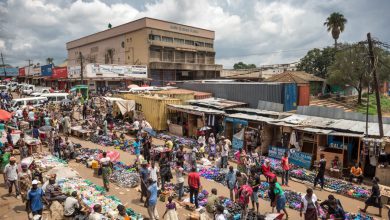‘Development has evolved slowly’
World Bank country manager Faras Raad says Malawi’s economic development has evolved slowly and yielded modest improvements in living standards.
Speaking on the sidelines of the Malawi Institute of Procurement and Supply in Mangochi on Wednesday, Raad said since independence in 1964, gross domestic product (GDP) per capita has risen from about $197 in 1965 to $394 in 2021, averaging under 1.5 percent growth per year.
He said there were periods of high growth from 1964 to 1979 and from 2006 to 2011, but significant setbacks in the 1980s to 1990s, after 2012, and during Covid‑19, with climate shocks, too taking a toll, causing damages of roughly 1.5 to 2.7 percent of GDP, highlighting Malawi’s acute climate vulnerability.

stubbornly high. | Grace Phiri
Said Raad: “As a result, extreme poverty has remained stubbornly high: over 75 percent of the population live under the international poverty line of $3 (about K5 000) per day.
“Against this historical development backdrop, current macroeconomic challenges also abound, per capita growth in 2024 was negative for a fourth consecutive year, the country’s fiscal deficit is one of the highest on the continent, inflation remains significantly elevated, the parallel forex premium exceeds 100 percent and official forex reserves are at about two weeks of import cover.”
He said the bank is hoping for the reform agenda to pick up following the election, and that “the World Bank stands to support any reform agendas to make sure that macroeconomic stability is restored”.
Economists say a higher GDP per capita is generally associated with a higher standard of living.
In recent years, the country registered a growth of 1.9 percent and 1.8 percent in 2023 and 2024 respectively, due to cyclones such as Freddy and El- Nino weather related conditions, which reduced agricultural production.
According to the data, economic growth has averaged 2.2 percent, far below the recommended 10.6 percent required to grow the economy to a lower middle income status by 2030, with a GDP per capita mark of about $1 086 (about K1.9 million) as envisaged in Malawi 2063, the country’s long-term development strategy.
Scotland-based Malawian economist Velli Nyirongo ealier attributed the country’s stagnation to internal structural and governance issues.
He said: “Externally, global economic shifts and trade dynamics pose both risks and opportunities.
“Leveraging Malawi’s position within regional trade blocs such as the African Continental Free Trade Area could unlock new markets for Malawian products.”
Meanwhile Malawi has rolled out a new National Social Protection Policy, a move described as a key step in shifting the country’s response to poverty and vulnerability to shield the poor from economic and climate shocks.
During the launch of the five-year policy that runs from 2024–2029 in Lilongwe recently, Minister of Finance and Economic Affairs Simplex Chithyola Banda said the new policy is a collective promise to shift from emergency relief to long-term resilience, inclusive development and building a fairer society.
The new policy replaces the 2012 National Social Support Policy and introduces a coordinated, lifecycle-based approach.
The new policy is tied closely to broader national and continental goals, including Malawi 2063—the country’s long-term development plan, the African Union’s Agenda 2063 and the United Nations Sustainable Development Goals, particularly those that focus on ending poverty and reducing inequality.





